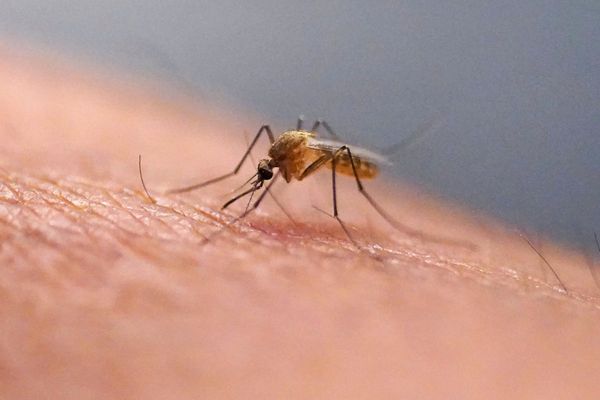
Governments risk another decade of failure on nature loss if they do not implement a landmark agreement in full, the UN’s acting biodiversity chief has warned, 12 months after the deal was struck.
As anticipation begins for the next summit – which was confirmed last week to be hosted by Colombia – the legacy and implementation of the last, historic agreement remains uncertain.
Colombia’s environment minister, Susana Muhamad, says that Cop16 is “going to be a great opportunity for one of the most biodiverse nations in the world”, adding: “This event sends a message from Latin America to the world about the importance of climate action and the protection of life.”
Looking back to this time last year in Montreal where, in the early hours of 19 December, governments signed a once-in-a-decade deal, it is worth remembering that the world has never met a UN target to stem the destruction of wildlife and life-sustaining ecosystems.
However, there have been significant efforts to make sure the 2020s are different, amid increasingly alarming warnings about the health of the planet and the risk further damage poses to human society. Cop15’s 23 targets included protecting 30% of the planet for nature, reforming billions in damaging subsidies and restoring huge areas of degraded ecosystems.
At the Cop28 climate negotiations in Dubai, the biodiversity deal – known as the Kunming-Montreal framework – received a boost after it was referred to in the final text. It means that countries will need to consider the biodiversity agreement while developing their next round of nationally determined contributions before Cop30 in Brazil in 2025, raising hope that biodiversity and climate will be treated as interlinked issues. The importance of nature, halting deforestation by 2030 and the role of Indigenous communities were also recognised in the text in Dubai.
Despite the positive momentum, David Cooper, the UN’s acting biodiversity chief, says focusing on one high-profile target to protect 30% of Earth for nature without action on agriculture, harmful subsidies and pollution could risk another decade of failure.
“If we focus on the target to protect 30% of Earth alone without looking at the other elements of the framework, we risk repeating the experience and to a large extent the failures of last decade’s targets,” says Cooper. “It’s really important that we look at all of the drivers of biodiversity loss and their underlying causes which other targets address, such as things like subsidies, financial investments and consumption patterns.”
Two million species are at risk of extinction, according to researchers, threatened by habitat loss, pollution, invasive species, the climate crisis and direct exploitation. With the climate expected to become the primary threat to life on Earth as the planet continues to heat, Cooper says it is vital to limit global warming to 1.5C.
“Halting and reversing biodiversity loss simply cannot be done if we don’t act on climate change,” he says. “If we get close to 1.5C, the ability of ecosystems to help with climate change mitigation and adaptation is dependent on the integrity of those ecosystems. It is not just about carbon. Natural carbon stores in soils, plants, peatland and forests very much depend on functioning ecosystems.”
When it comes to preventing destruction of nature on the planet, there has been some positive news this year. Deforestation in the Brazilian and Colombian Amazon has slowed, while Malaysia and Indonesia have maintained low rates of forest loss, raising the prospect of 2023 marking the first global drop in the activity after years of clearing.
Governments have also created and monetised a new international fund for nature, which was a sticking point in Montreal. After much argument at Cop15, another financial mechanism for nature funding is also being developed to share the benefits from drug discoveries, vaccines and food products based on biodiversity.
Johan Rockström, a leading climate scientist and the director of the Potsdam Institute for Climate Impact Research, says he is hopeful about this decade’s agreement.
“I am quite optimistic. I think it’s starting to sink in that nature is not about environmental protection, it is about security and stability. If you want to have modern societies, you want to keep nature,” he says. “The quantification of 1.5C equivalent for nature that we got at Cop15 is really valuable. Connecting with the climate agenda is phenomenal.”
Before the 2024 event, governments will need to set out their plans for meeting this decade’s nature targets. In Dubai, Colombia’s president, Gustavo Petro, told the Guardian that biodiversity will be the basis of the country’s economy after it pledged to phase out coal, oil and gas, also backing a fossil-fuel non-proliferation treaty at Cop28.
At the climate summit, China became the latest country to sign up to the High Ambition Coalition for Nature, pledging to protect 30% of its land and sea. With 116 countries now signed up, the director of the initiative, Rita El Zaghloul, says the emphasis was on making sure areas were under high-quality protection.
“We want countries to submit their requests on where they need support and where the gaps are in order for us to be able to assist them. It is not just about the coverage of the protected area – it is about the quality of the protection,” she says.
The IUCN president, Razan Al Mubarak, a Cop28 climate champion, was also optimistic that this decade would be different for nature.
“I have to be optimistic. I think we have a clear target with 30 by 30. It’s that nexus that will bring the necessary attention and finance, and empower [Indigenous communities] that are already protecting 80% of our biodiversity to continue to do that,” she says.
“Brazil has been able to demonstrate that you can turn the tide, not once but twice under Lula’s presidency. Indonesia is doing it. With the right targets, with the right attention, with the political will and the finance, we have demonstrated that it is possible.”
Find more age of extinction coverage here, and follow biodiversity reporters Phoebe Weston and Patrick Greenfield on X for all the latest news and features







